READING CLOSELY
FOR TEXTUAL DETAILS
DEVELOPING CORE LITERACY
PROFICIENCIES
GRADE 6
Literacy Toolbox

READING CLOSELY GRAPHIC
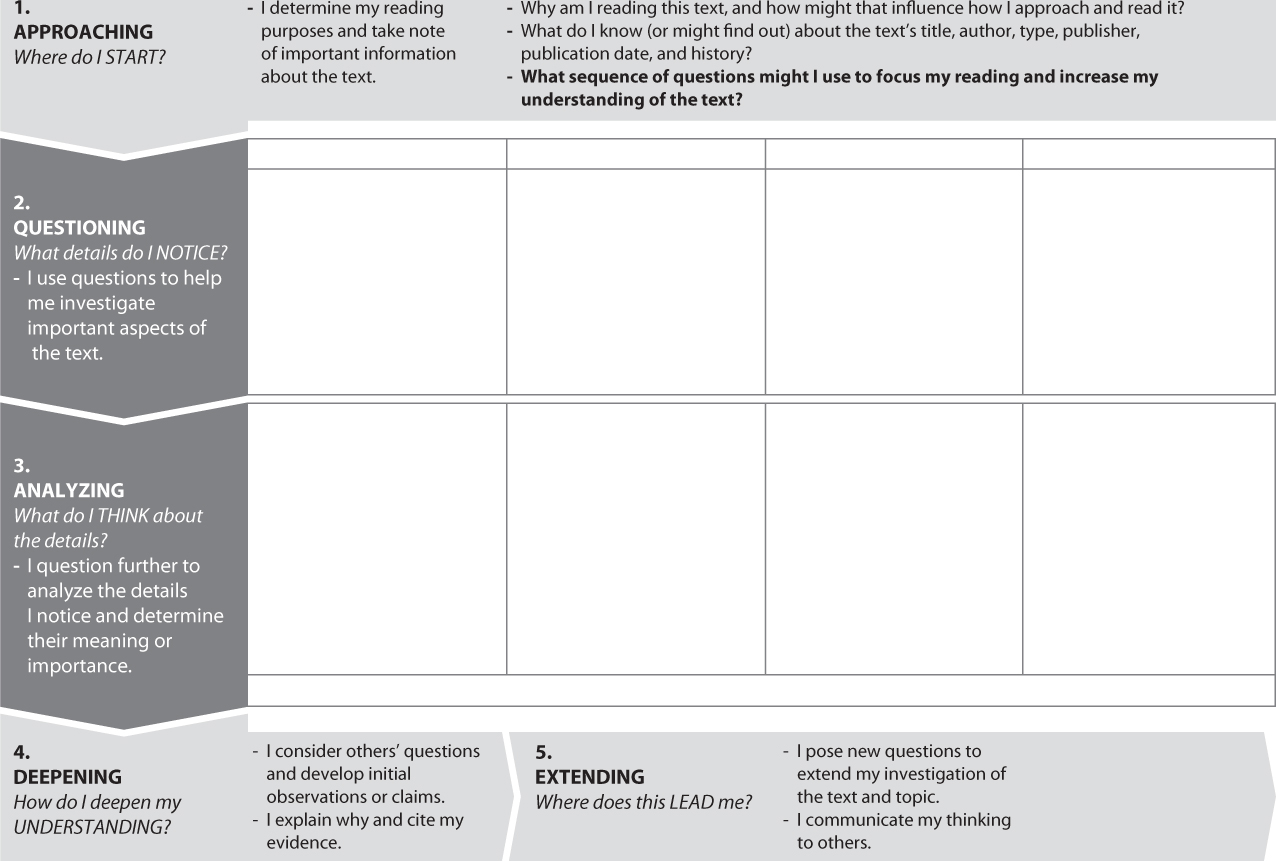
READING CLOSELY: GUIDING QUESTIONS

ATTENDING TO DETAILS

READING CLOSELY FINAL WRITING AND DISCUSSION TASK HANDOUT
In this unit, you have been developing your skills as an investigator of texts:
Your final assignments will provide you with opportunities to use all of these related skills and to demonstrate your proficiency and growth in Reading Closely. |
| FINAL ASSIGNMENTS |
|
| SKILLS AND HABITS TO BE DEMONSTRATED |
As you become a text expert, write your text-based explanation, and participate in a text-centered discussion, think about demonstrating the Literacy Skills and Discussion Habits listed in the following to the best of your ability. Your teacher will evaluate your work and determine your grade based on how well you do the following things:
Note: These skills and habits are also listed on the Student Literacy Skills and Discussion Habits Checklist, which you can use to assess your work and the work of other students. |
QUESTIONING PATH TOOL
Text 1—Representations of Wolves
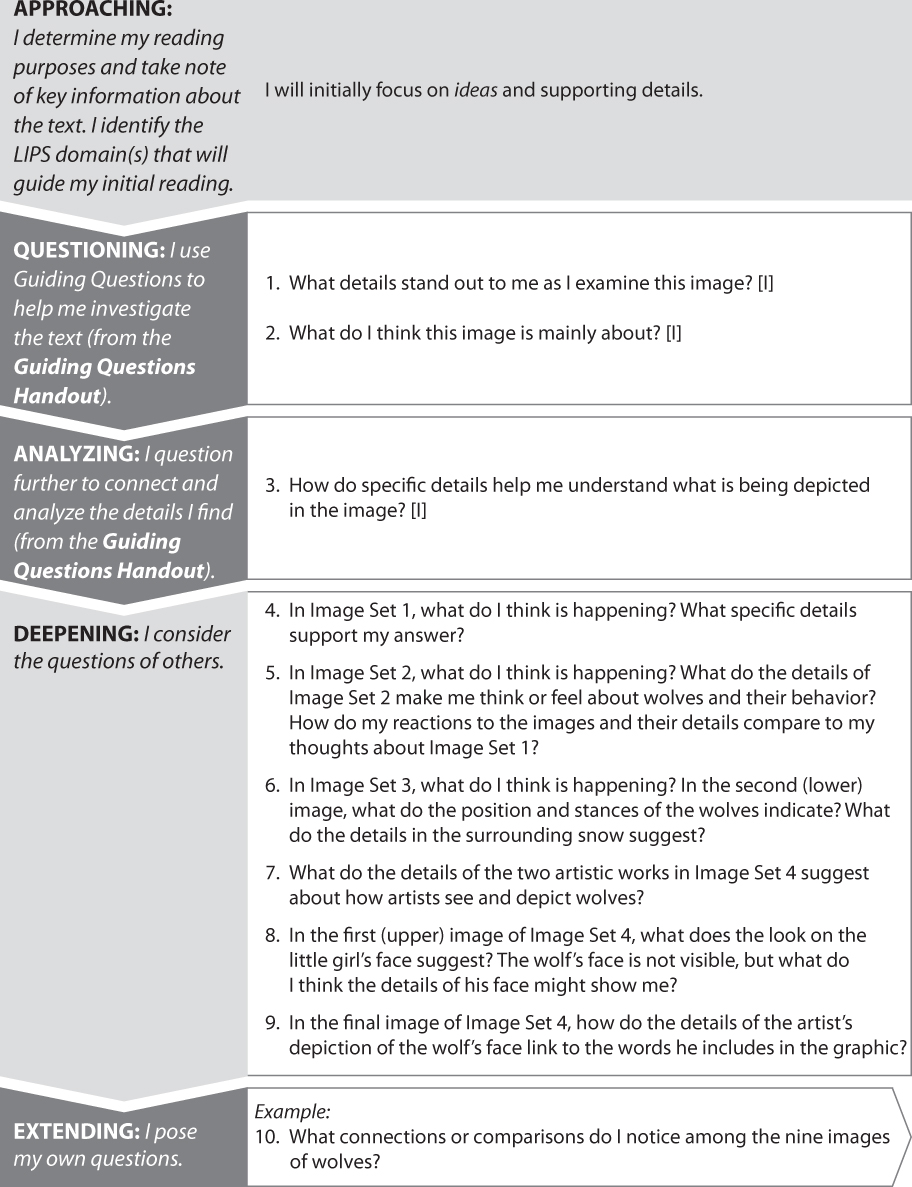
QUESTIONING PATH TOOL
Text 2—”A Brief History of Wolves in the United States”(Model 1)
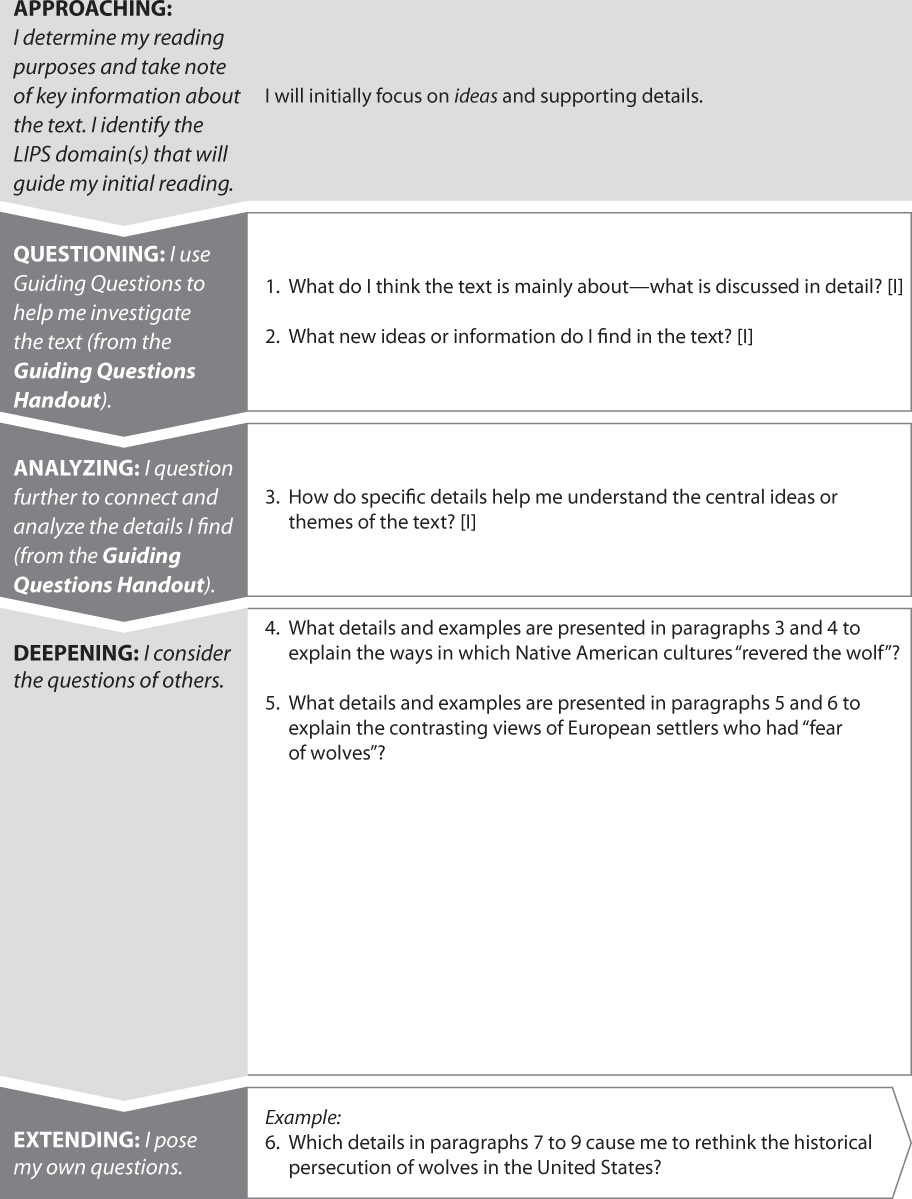
QUESTIONING PATH TOOL
Text 3—Two Wolves Video
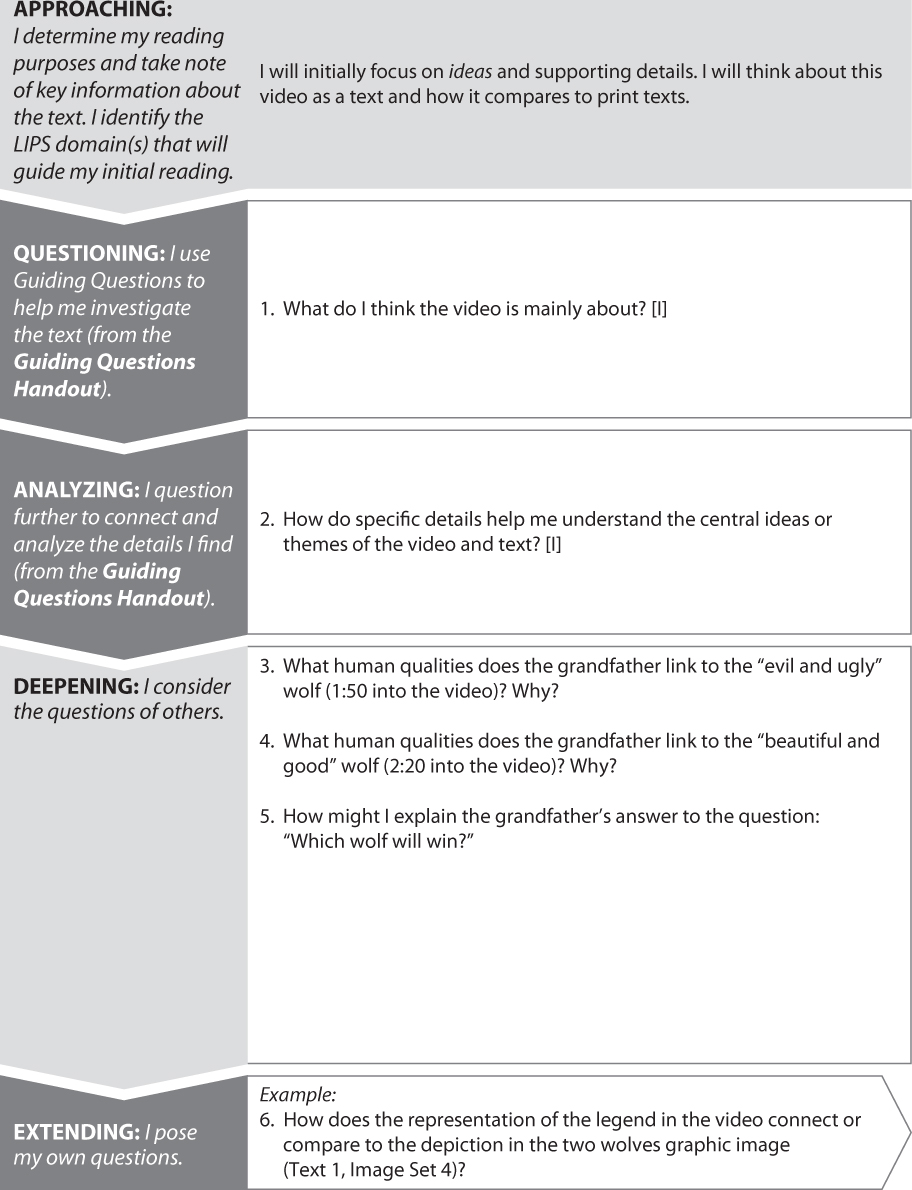
QUESTIONING PATH TOOL
Independent Web Search
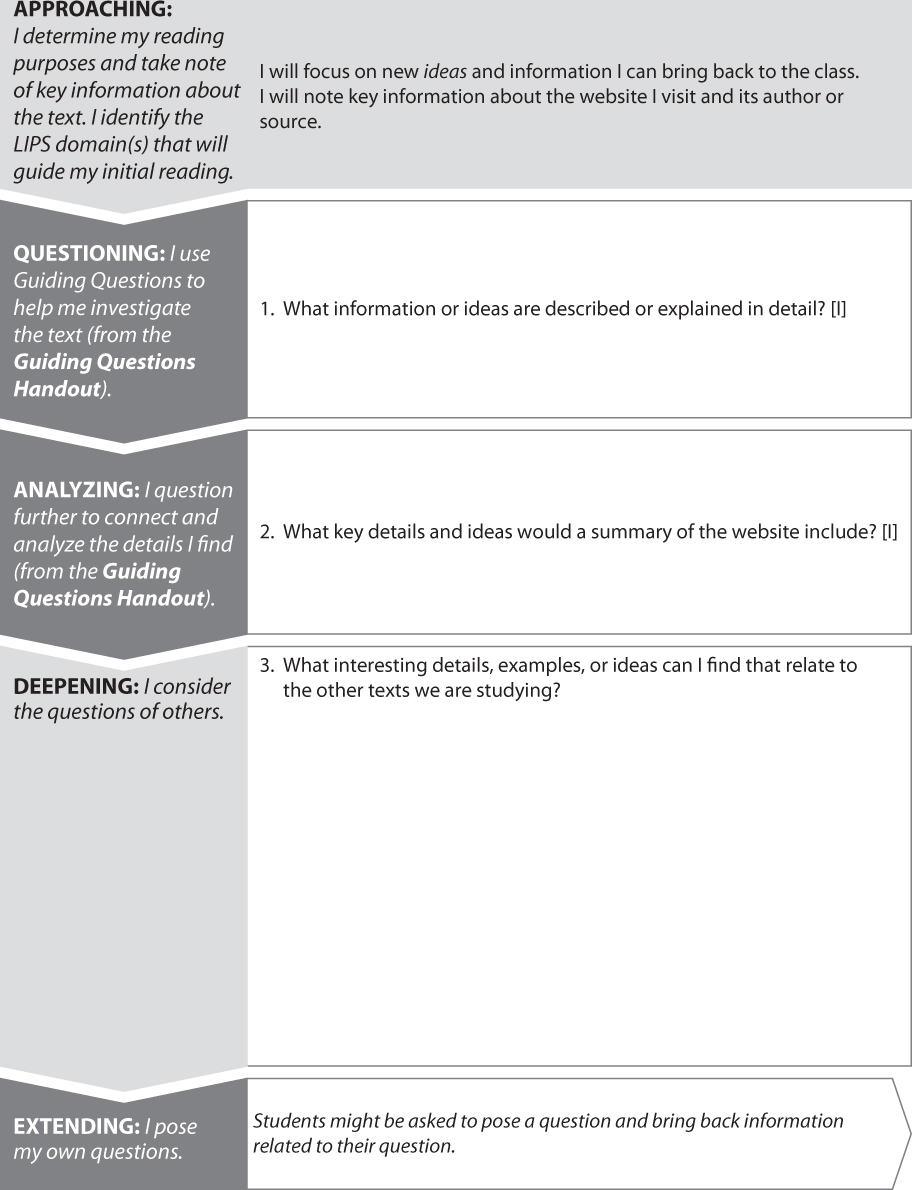
APPROACHING TEXTS TOOL

APPROACHING TEXTS TOOL

QUESTIONING PATH TOOL
Text 2—”A Brief History of Wolves in the United States” (Model 2)
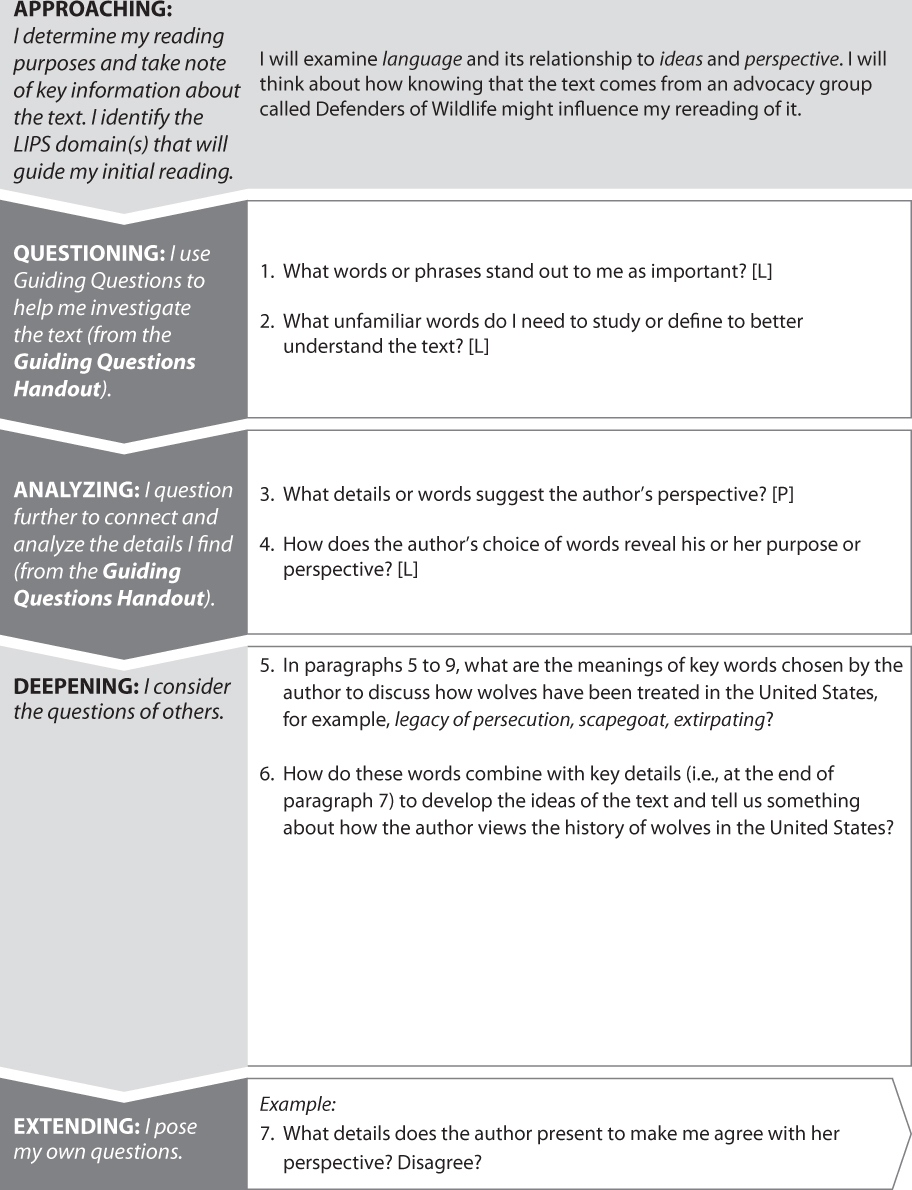
QUESTIONING PATH TOOL
Text 5—”All About Wolves”: HUNTING BEHAVIOR

APPROACHING TEXTS TOOL
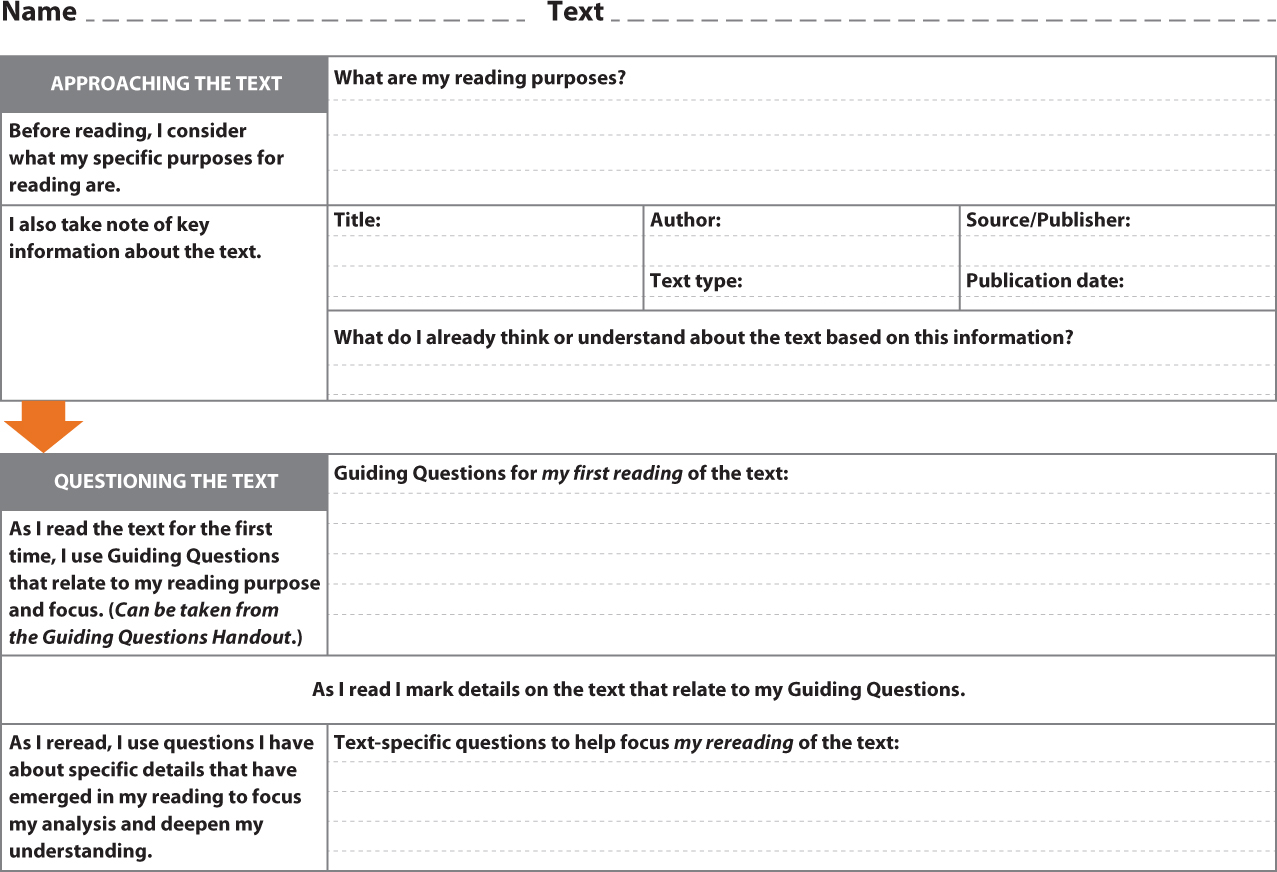
ANALYZING DETAILS TOOL
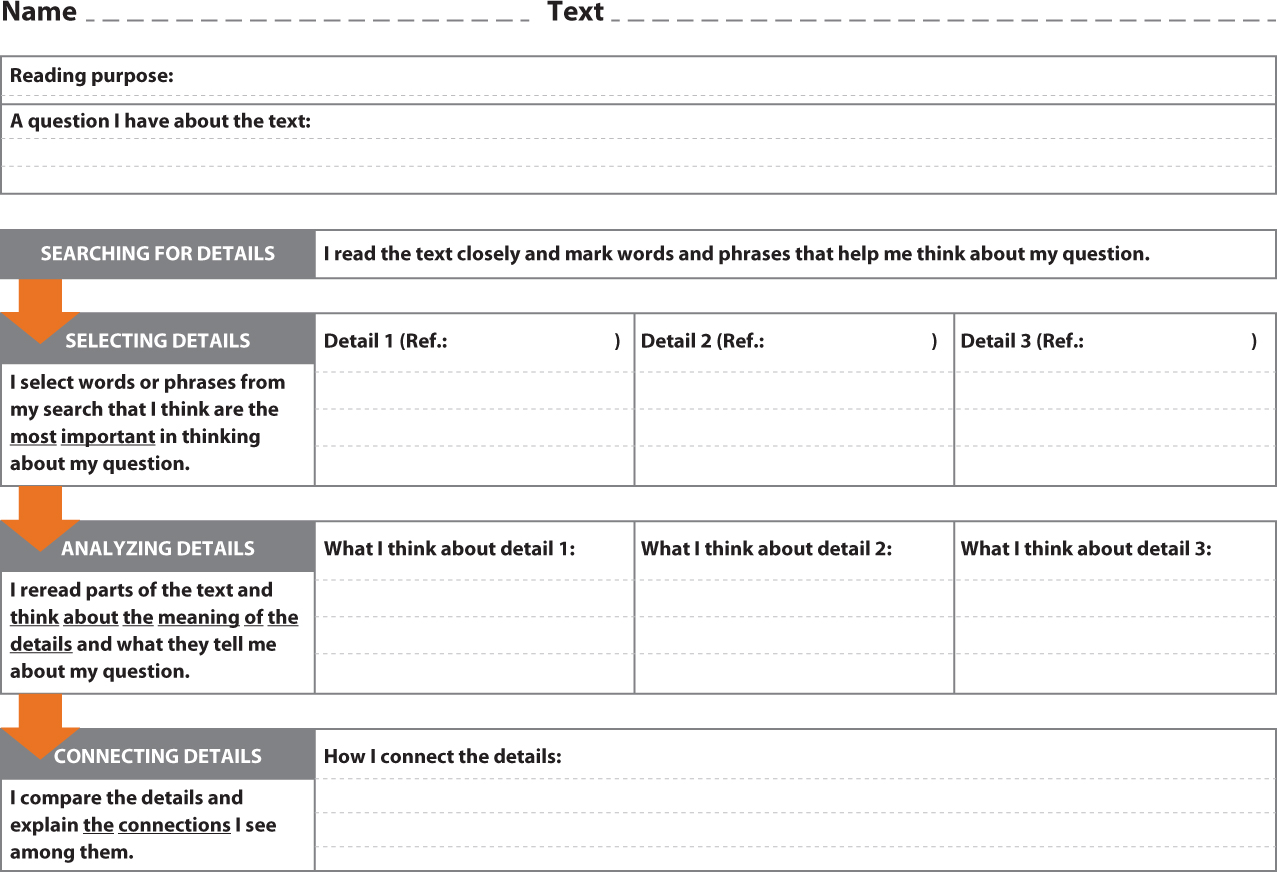
ANALYZING DETAILS TOOL
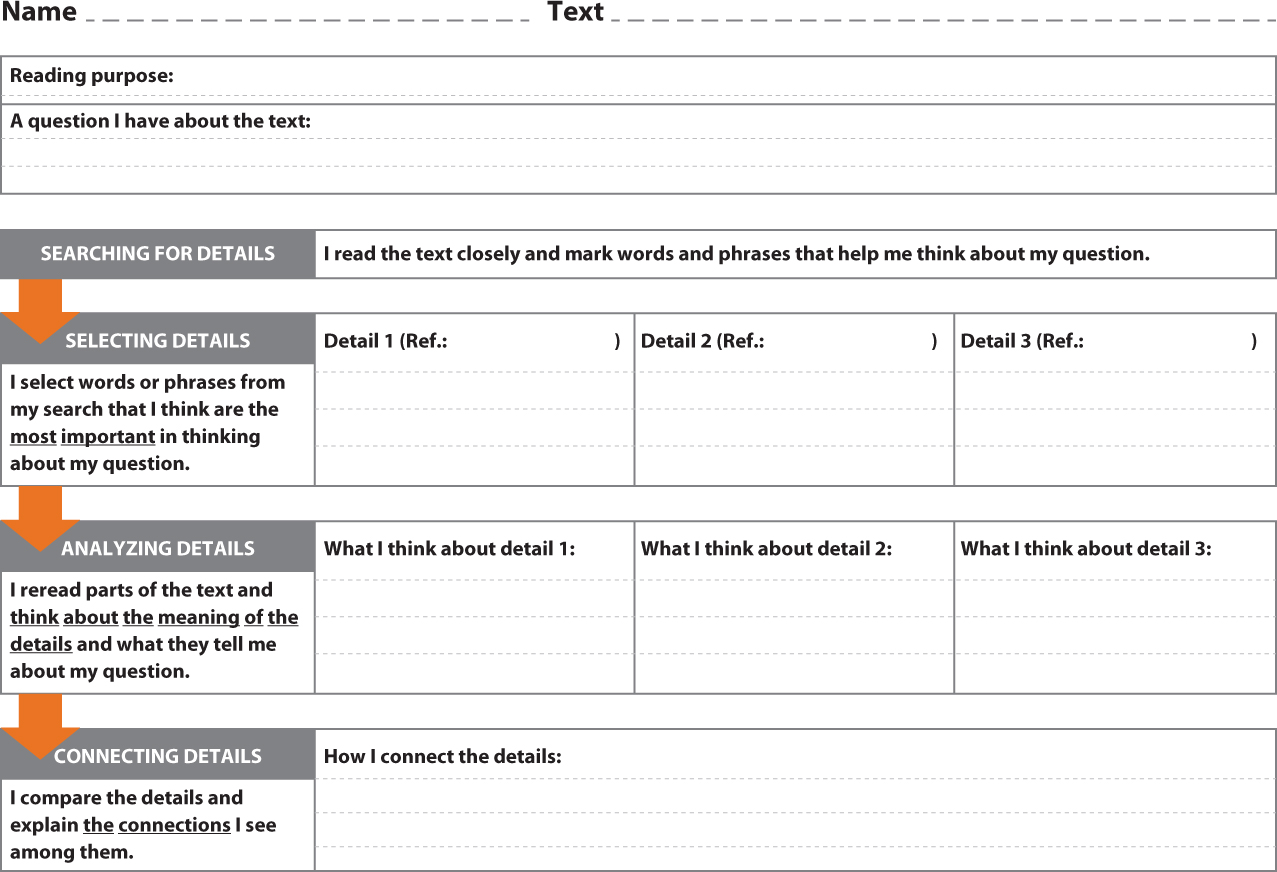
ANALYZING DETAILS TOOL
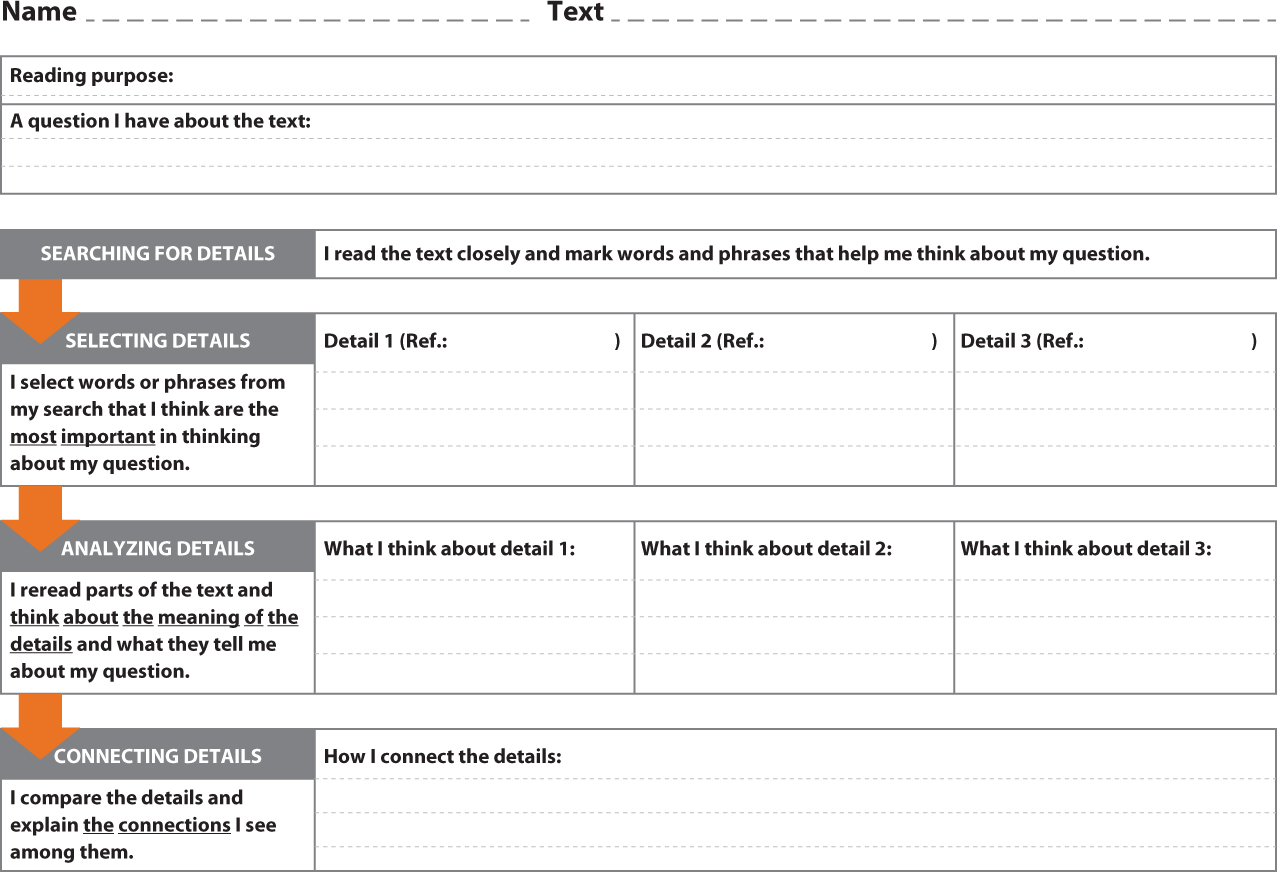
QUESTIONING PATH TOOL
Text 6—White Fang, “The Battle of the Fangs”

APPROACHING TEXTS TOOL

ANALYZING DETAILS TOOL

ANALYZING DETAILS TOOL
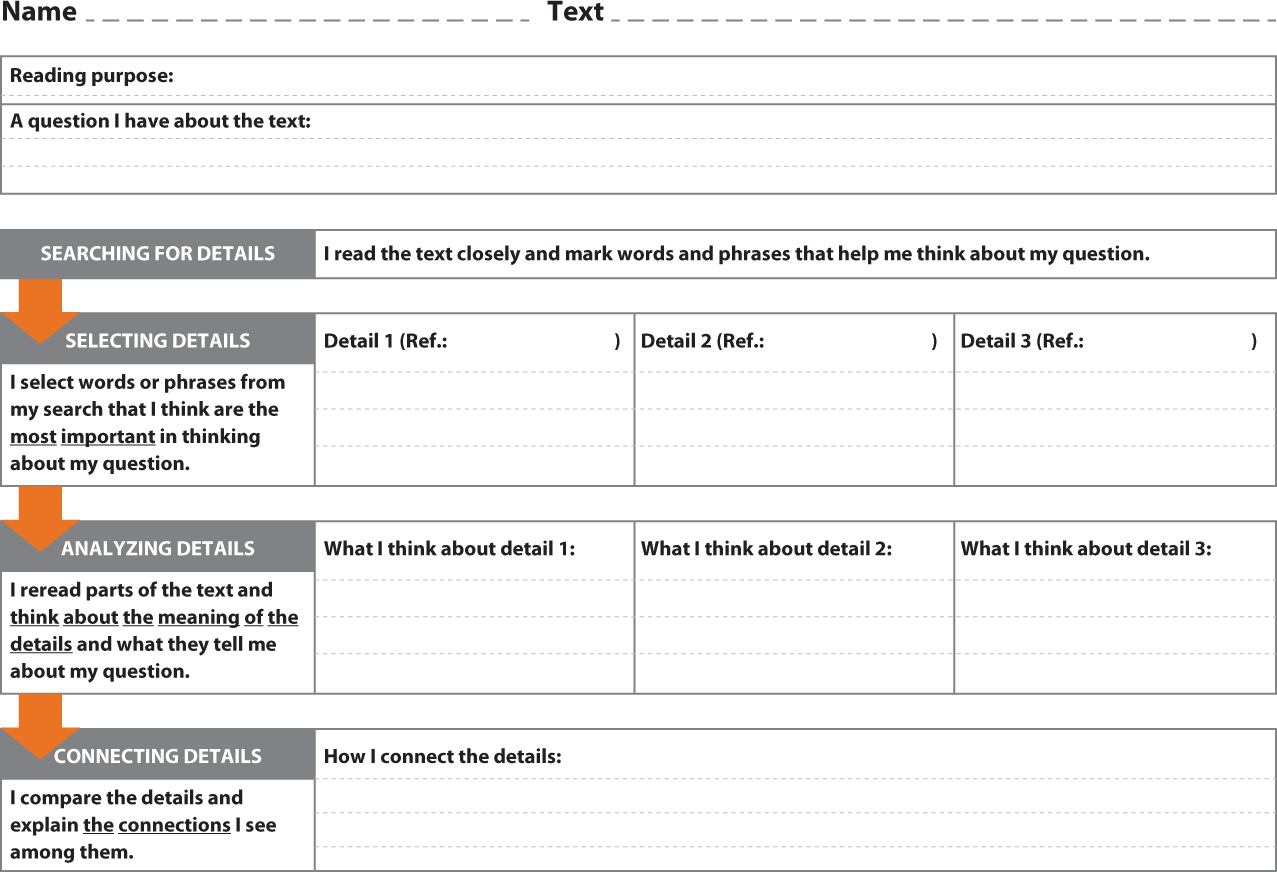
QUESTIONING PATH TOOL
Comparison of Text 5 and Text 6
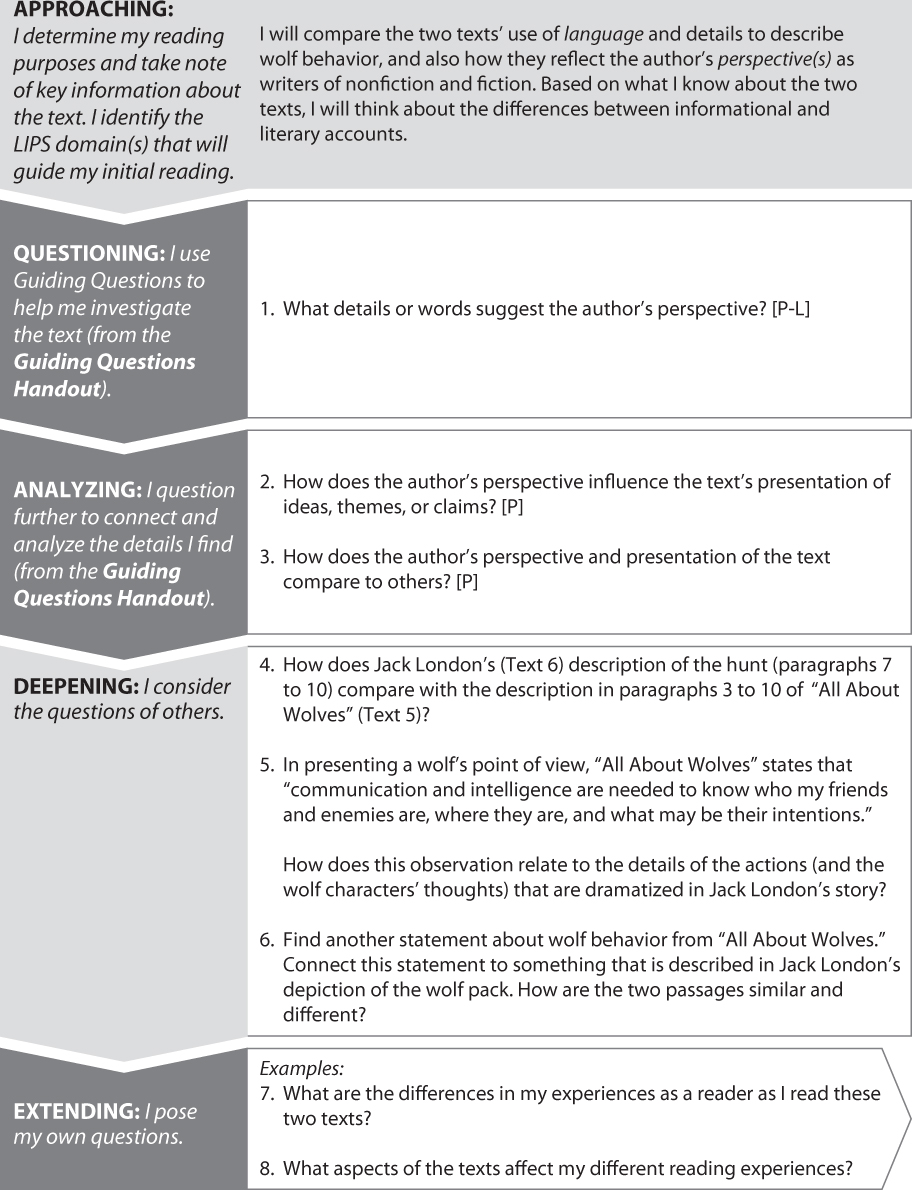
ANALYZING DETAILS TOOL

ANALYZING DETAILS TOOL
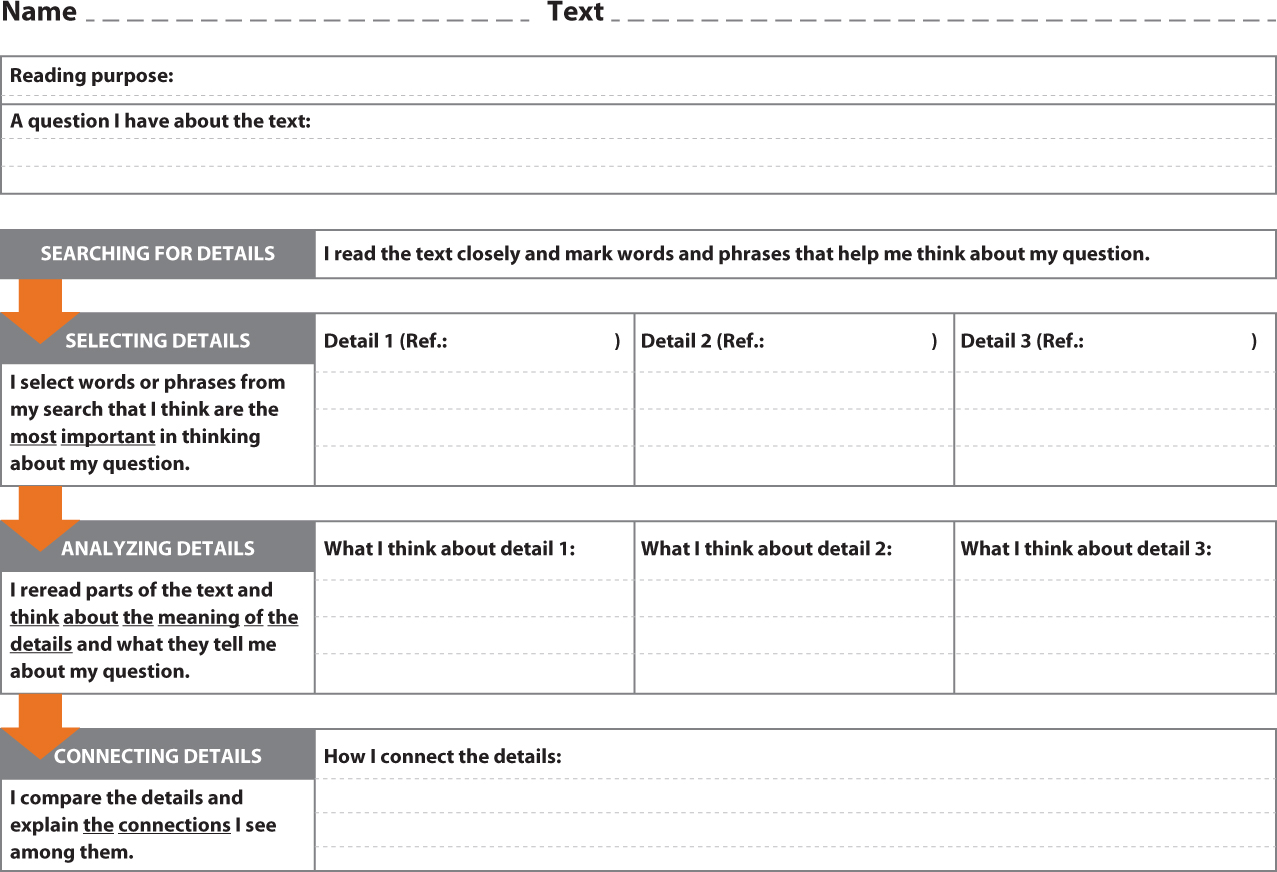
QUESTIONING PATH: TEXTS 7, 8, AND 9

APPROACHING TEXTS TOOL

QUESTIONING PATH TOOL
Text 7—“All About Wolves”: PACK BEHAVIOR
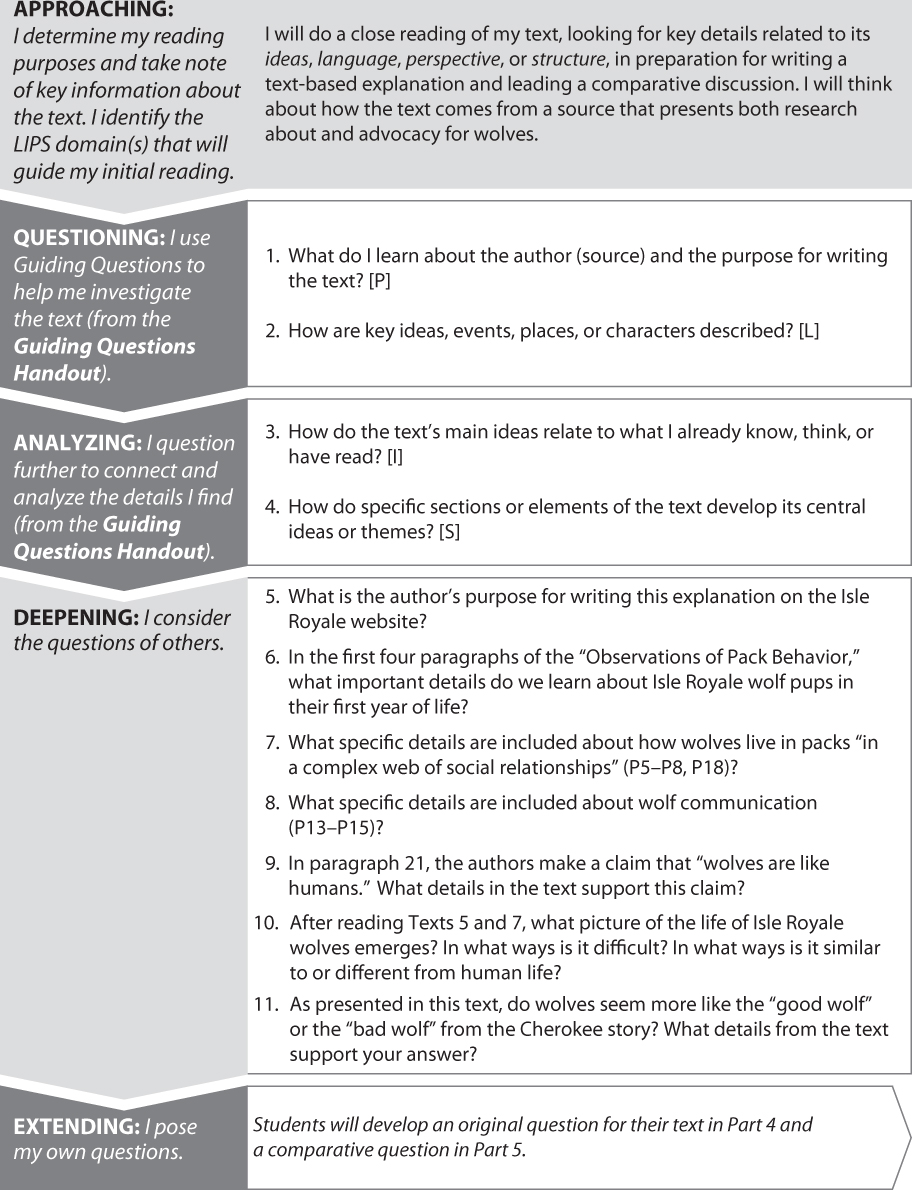
QUESTIONING PATH TOOL
Text 8—White Fang, “The Grey Cub”
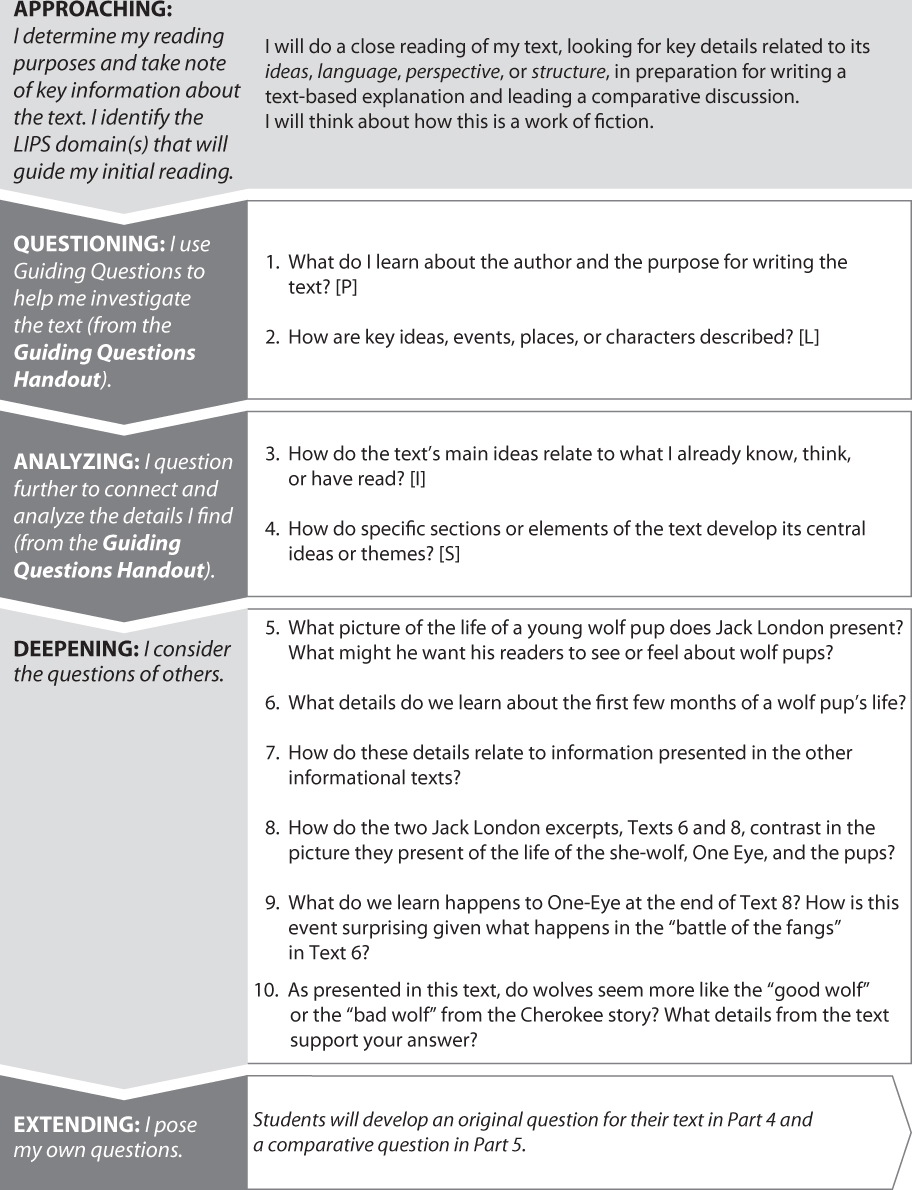
QUESTIONING PATH TOOL
Text 9—“We Didn’t Domesticate Dogs. They Domesticated Us.”

APPROACHING TEXTS TOOL

ANALYZING DETAILS TOOL

ANALYZING DETAILS TOOL

ANALYZING DETAILS TOOL

PART 4: TEXT-BASED EXPLANATION LITERACY SKILLS CHECKLIST
| LITERACY SKILLS | DESCRIPTORS: Find evidence of using the literacy skill in the draft. Does the writer’s explanation … |
NEEDS WORK | OKAY | VERY STRONG |
| ATTENDING TO DETAILS | Identify words, details, or quotations that are important to understanding the text? | |||
| SUMMARIZING | Correctly explain what the text says about the topic? | |||
| IDENTIFYING RELATIONSHIPS | Notice important connections among details, ideas, or texts? | |||
| RECOGNIZING PERSPECTIVE | Identify and explain the author’s view of the text’s topic? | |||
| USING EVIDENCE | Support the explanation with evidence from the text; use accurate quotations, paraphrases, and references? |
PART 5: TEXT-CENTERED DISCUSSION ACADEMIC HABITS CHECKLIST
| DISCUSSION HABITS | DESCRIPTORS: When—and how well—have I demonstrated these habits? | EXAMPLES FROM TEXT-CENTERED DISCUSSIONS |
| PREPARING | Reads the text(s) closely and thinks about the questions to prepare for a text-centered discussion | |
| COLLABORATING | Pays attention to other participants while participating in and leading a text-centered discussion | |
| COMMUNICATING CLEARLY | Presents ideas and supporting evidence so others can understand them |
STUDENT READING CLOSELY LITERACY SKILLS AND DISCUSSION HABITS CHECKLIST
| READING CLOSELY LITERACY SKILLS AND DISCUSSION HABITS |  |
Evidence Demonstrating the Skills and Habits | |
| READING AND THINKING | 1. Attending to Details: Identifies words, details, or quotations that are important to understanding the text | ||
| 2. Interpreting Language: Understands how words are used to express ideas and perspectives | |||
| 3. Summarizing: Correctly explains what the text says about the topic | |||
| 4. Identifying Relationships: Notices important connections among details, ideas, or texts | |||
| 5. Recognizing Perspective: Identifies and explains the author’s view of the text’s topic | |||
| 6. Using Evidence: Uses well-chosen details from the text to support explanations; accurately paraphrases or quotes | |||
| DISCUSSION | 7. Preparing: Reads the text(s) closely and thinks about the questions to prepare for a text-centered discussion | ||
| 8. Questioning: Asks and responds to questions that help the discussion group understand and compare the texts | |||
| 9. Collaborating: Pays attention to other participants while participating in and leading a text-centered discussion | |||
| 10. Communicating Clearly: Presents ideas and supporting evidence so others can understand them | |||
| General comments: | |||